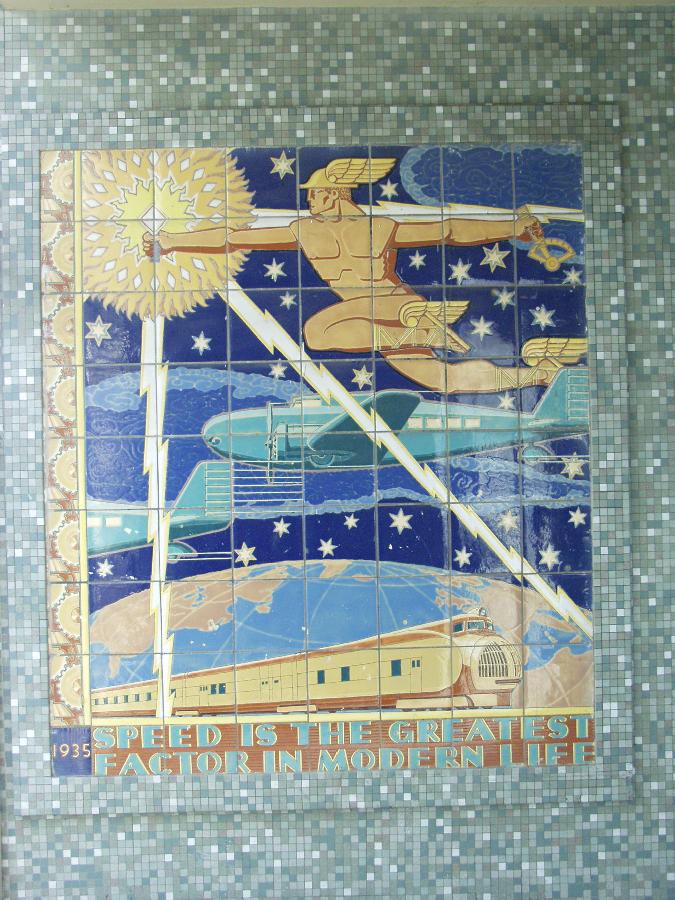Speed Is The Greatest Factor in Modern Life
Anonymous
Located on the East face of Building 300 on the Poly High School campus, this magnificent tile “painting” illustrates the hopefulness of the 1930s. Despite the crushing economic realities of the Great Depression, great advances in technology and industry were in full swing. The ocean liner, the airplane, the automobile and even communications were advancing at lightning speed compared to previous generations. This pattern of growth was reflected in the architecture known variously as Art Deco, Streamline Moderne, Depression Moderne. Designed and executed by an anonymous Southern California Arts Project (SCAP) artist, “Speed if the Greatest Factor in Modern Life,” is one of Long Beach’s most remarkable pieces of art from the WPA era. The subject, first of all, is a departure from the typical style of Local Scene painting found in most schools and libraries (activities of local industry, history, and edification). It features, instead, the Roman god Mercury, messenger of the gods, representing speed. Upon closer inspection, the viewer notices that Mercury races over the earth while gripping an open throttle in his left hand and thrusting out a torch, radiating lightning bolts, in his right. The sky is filled with airplanes (representing Long Beach’s pride and support for the Douglas DC-1 and DC-2 aircraft manufactured nearby). A Union Pacific M-10,000, known as the “wingless airplane on tracks” races across the bottom border. This tile was designed shortly after the influential Chicago World’s Fair of 1933-34. Dubbed the “Century of Progress” Exhibition, an artist could not have avoided the fever of speed, progress and hope for the future sweeping across the country. A groundswell of support for industry and technology fueled the country’s optimism, playing out in this unusual and beautiful painted tile piece.
GET DIRECTIONS »



